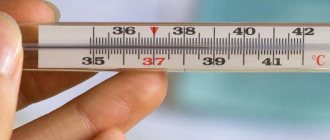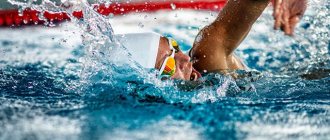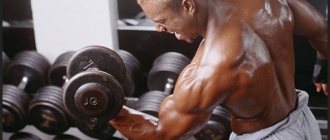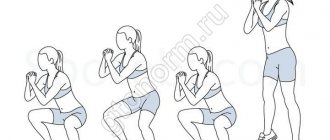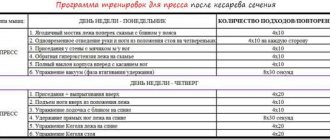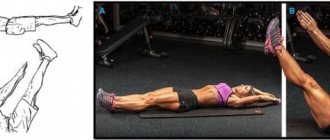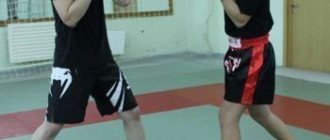Spinal diseases are a common occurrence today. Moreover, not only the elderly, but also the young are at risk. The problem is not only pain and destruction of the bone and muscle tissue of the spine. Internal organs and their proper functioning directly depend on the condition of the spine. Our people are accustomed to the fact that when they are ill, they prefer self-medication, buying medicines from pharmacy counters that can sometimes cause harm, instead of the expected result.
Each drug has a number of side effects, and to avoid future problems with the gastrointestinal tract, we advise you to turn to alternative methods of treatment. In this article we look at how to strengthen your spine, treatment with exercises from professionals in the field of orthopedics and joints, like Norbekov, Paul Bragg, Nishi and others.
General information
Before we talk about how to speed up recovery after training, let's find out what recovery is from a physiological point of view. Any workout for the body is stressful. It can be compared to drinking a bottle of vodka, piercing the liver during a fight, or other serious injury. The only difference is that in the above examples one organ suffers, but severely. After training, damage is distributed among all organs and systems.
Recovery, or “supercompensation,” is the body’s response to the stress received. From a survival point of view, the body strives to adapt to the stress received in order to make it less stressful. Due to limited resources, processes do not always go as expected.
There are two types of recovery mechanisms:
- Adaptive. This is an ideal case when a person gets enough rest, eats a lot and is not nervous. Due to such restoration, his characteristics improve, adipose tissue disappears, muscles and strength indicators grow.
- Optimization. It occurs when the body tries to adapt to the resulting stress using only internal resources. In other words, you will become stronger in one area and weaker in another. For example, with intense drying, the body learns to use fat tissue more efficiently, but in order to survive, it also strives to reduce the amount of muscle. You will become stronger, but weaker and smaller.
Second ritual action
Fills vortices with strength, giving them stability.
Before starting this exercise, I lie on my back, extend my arms above my head and stretch to align my spine. Then I start the exercise itself.
Starting position: performed lying on your back, arms extended along the body. Next, while inhaling, you need to simultaneously raise your head, pressing your chin to your chest, and raise your legs vertically up without bending your knees. Then, while exhaling at the same time, smoothly lower your head and legs and relax all your muscles.
My visualization: when I lift my legs, I imagine that I am pumping up a glowing ball in my lower abdomen and setting myself up to have fun and enjoy life throughout the day.
How long does it take for muscles to recover?
It's easiest to repeat the popular belief that muscles recover on average within 48 hours from the moment of training. But this is fundamentally incorrect and looks like the average temperature in the ward. The time it takes for muscles to recover after training depends on many factors, including individual ones. Some of them can be influenced, others are beyond our control.
Let's list these factors:
- Load intensity. Obviously, if you do light workouts, your muscles can recover within an hour, since they are not under serious stress. The reverse is also true: if you have surpassed yourself and set a record in competitions, then you can avoid lifting weights for a week, or better yet, two.
- Availability of sufficient nutrients. Nutrition is an integral component for recovery. It determines whether recovery will follow an adaptive path or an optimization path.
- Hormonal background. It is usually associated with levels of the hormone testosterone, which is used as a doping agent to speed up and increase the intensity of protein production in the body. In fact, muscle recovery after training is influenced by growth hormone, peptide hormones, thyroid hormones, etc.
- Metabolic rate. It determines how quickly your body will begin the process of regeneration after stress. The faster the metabolism, the faster the body can cope with the load.
- Somatotype. This is where the main division into endo-ecto- and mesomorphs came from. How the body and muscles react to stress, what fibers are involved, and how the body copes with stress depends on a person’s somatotype.
- General condition of the body. If you are in a depressed mood or have recently overcome an illness, then it will take you an order of magnitude longer to restore your body between workouts.
Main conclusions
Long pause in sports activities – more than 2 months. Before starting training after a long break, it is necessary to take into account a number of features: classes should not be held more than 2 times a week, during exercise all muscle groups are involved, complexes are performed only after warming up.
The ideal type of exercise after a break is bench press, squats, hanging knee raises, push-ups, and incline sit-ups. On average, you can fully restore your physical shape in half the rest time. An important rule during training is to avoid complex exercises and sports nutrition, and to adhere to the exercise technique.
How much time does the body need?
How to quickly recover after training in the absence of serious stress in the form of overtraining, artificial acceleration of metabolism, calorie deficit, dehydration.
The body needs at least two days to fully recover between heavy workouts. This is due to the fact that during training the body must reconfigure its systems to cope with heavy load:
- Increase hormone levels.
- Optimize resources for recovery processes.
- Improve the functioning of neuromuscular synapses.
- Compensate for calorie deficit.
- Improve the functioning of the heart muscle.
- Eliminate the consequences of an adrenaline surge.
Interesting fact: any work with weights ranging from 70 to 90% of a one-time maximal maximum forces our body to produce hormones of the adrenaline group. This is partly why people find it easier to lift lighter weights for more reps. The “striptease” lifting training program is based on this principle, in which a person first works with maximum weight, and after each approach reduces the weight load by 5-10%.
Third ritual action
Starting position: kneeling, body vertical to the floor, hands with palms on hips, under buttocks. Next, we tilt our head forward, pressing our chin to our chest, and then, as we inhale, we tilt our head back and stick our chest forward; as we exhale, we return to the starting position, and tilt our head, pressing our chin to our chest.
In this exercise, when I am in the starting position, as I exhale, I tightly squeeze my buttocks (I took it from a similar exercise in qigong) and imagine the energetic cleansing of the body from top to bottom.
Mental setting: while inhaling, we pump up willpower into the solar plexus area.
Recovery rates
Indicators of body recovery after training are a large set of biochemical processes and characteristics that cannot be determined independently without a medical examination. But some basic indicators can be determined independently.
- Pulse and pressure. After exercising at normal intensity for 120 minutes, your heart rate should drop to at least 75 beats per minute (or below the aerobic zone). If your heart rate after training is within a wide range, this indicates overtraining or chronic fatigue.
- Dream. If the training is done correctly, you should not have problems sleeping. As a rule, problems begin with chronic disruption of the training process. The only exception is if you did your workout less than 2 hours before going to bed.
- Well-being. If you overtrain or under-recover, you will feel worse and worse with each workout.
- Progress. Possible only with full recovery. The only exception is a strength plateau.
What not to do at the beginning
You need to know about the prohibitions during training:
- Lack of warm-up before classes. At first, even a regular warm-up may seem difficult, so immediately after the break you can limit yourself to just this. It's better to warm up without working out than vice versa.
- Overload of the body. Overtraining is one of the main problems of people who return to sports after a long break. It must be remembered that a heavy load does not always increase the intensity of training. Even professionals need to monitor the degree and duration of stress so as not to provoke a state of “supercompensation”.
- Do not start sports activities with heavy exercises. If the training is carried out in the gym, then at first you need to give preference to deadlifts and presses. It is better for the instructor to determine a set of basic classes that a person will adhere to for the first months after a long pause.
- Ignore the technique of conducting classes. If your skills are lost during the break, it is better to seek help from a trainer or fitness partners. Videos on the Internet also help you remember the technique of performing individual exercises.
- Do not use sports nutrition or special preparations to gain muscle mass. These drugs provide the desired effect after reaching the peak of physiological capabilities.
Techniques to Accelerate Recovery
Do I need to take anything to recover after a workout? With a competent approach using rapid recovery techniques, you will not need supportive pharmacology and sports nutrition products. Just look at the table with ways to speed up recovery.
| Method/technique/factor | Effect on the body | Effect on muscles |
| Emotional relief | Emotional relief implies active endorphin stimulation. This type of emotional release allows you to stimulate the production of pleasure hormones: dopamine and endorphin. This, in turn, will reduce the impact of stress on the body's recovery abilities. | Under the influence of endorphins, muscles relax faster, which allows blood to circulate freely in damaged areas, accelerating physical regeneration. |
| Complete rest | Complete rest is an ideal restorative method, which, due to the modern rhythm of life, is not available to everyone. With complete rest, the body, as during sleep, optimizes all resources for a speedy recovery. | With complete rest, the recovery processes in the body will take place somewhat faster, but the intensity of super recovery, which makes the athlete stronger and more resilient, will be significantly lower. |
| Massage | Massage is an excellent endorphin stimulant. In addition, the effect on the lymph nodes and nerve points can significantly improve the body's recovery from stress. | Physical impact stimulates blood flow to damaged areas to accelerate recovery processes in muscle tissue. |
| Increasing protein in the diet | An increase in calories and protein in particular is a kind of stress for the body, so it is important to select nutrients that will not overload the gastric system. An excess of protein allows you to quickly stabilize the functioning of most systems in the body. | All muscle tissue consists of amino acids (which are part of protein). The more amino acids available for muscle building, the faster and better they will recover. |
| Thermal effect | Similar to massage. | Similar to massage. |
| Increasing the amount of sleep | Sleep is an integral part of rest and recovery, as it allows you to reboot all systems and direct free resources to a speedy recovery from stress. | During sleep, major catabolic and anabolic processes occur. If there is not enough sleep, catabolism will prevail over anabolism. |
First ritual action
The book says that it is performed with the goal of “dispersing the vortices,” but besides this, we can imagine that we are connecting to the energy of the Earth, entering an energy channel: the power of the planet flows into the soles of our feet, continuing to move up along the spine.
Starting position: standing straight with arms extended to the sides. You need to slowly spin around, from left to right (clockwise), until you feel slightly dizzy. It's better to start with three times.
Additional incentive
So, it is impossible to radically speed up the recovery process, but faster recovery after training can be achieved through the use of sports nutrition products:
- Testosterone stimulants (tribulus, etc.) . They increase the natural production of male hormones, which increases the synthesis of building proteins. Allows you to reduce recovery time between workouts by 20-25%.
- Nitrogen donors. When used correctly, they accelerate tissue regeneration. It is important to give a full 24 hours of rest when using nitrogen donors, since the nervous and hormonal systems may simply not have time to recover in such a short period.
- Adaptogens. Depending on their class, they can affect both tissue regeneration and the general condition of the central nervous system.
- Vitamin and mineral complexes. Supporting the body with essential microelements speeds up the body’s recovery.
Which of these should you drink after training for recovery? First of all, vitamins and minerals. Testosterone nitrogen donors and stimulants are taken in a course, usually in the morning. And adaptogens - only in accordance with the instructions.
Secrets of spinal health from Nisha
The basis of the Japanese Katsuzo Nishi's health system includes six rules that activate the body's energy resources and promote the elimination of toxins.
Nisha's first rule: hard bed. It has been established that sleeping on a hard and level surface is very beneficial for the muscles and ligaments that hold the spine. The muscles relax as much as possible, and the body weight is evenly distributed.
The second rule of Nisha: a firm pillow. The Japanese say: If the neck is crooked, then life will be short. If you use a hard pillow, the condition of the cervical spine will improve, and as a result, cerebral circulation.
The third rule of Nisha: an exercise for the treatment of spinal curvature, improving posture.
The fourth rule of Niche: exercise for capillaries, for better blood supply to tissues and organs with oxygen.
The fifth rule of Nisha: closing the soles of the feet and hands. This is an exercise aimed at improving coordination functions.
Nishi's sixth rule: exercises for torso health. It improves the functioning of the nervous system, restores and maintains acid-base balance, and regulates the functioning of the intestines.
How do you know that recovery has taken place?
You can determine that recovery after a hard workout has been successful by one simple sign. This is an emotional state. With the right training regimen, you will want to get more physical activity after some time. You will feel more alert and energetic. In addition, you can determine how your recovery went after your last strength training session using barbell weights. If you can easily lift weights that seemed too heavy for you in the last workout, then your recovery has been successful.
To correctly predict your progress and not overdo it in training, keep a training diary, which will help you determine how well you have recovered from your last WODs
Mental attunement
Also, while performing rituals, you can use mental attitudes that give you the mood and harmonize your emotional and mental state for the whole day. Since the vortexes are located in the same place as the chakras, and perhaps we are talking about the same centers, we can not only improve our energy capabilities, but also use the spiritual settings defined by the ancient sages for each of them.
- I have enormous power!
- A sea of pleasure surrounds me!
- I have willpower!
- I'm filled with love!
- I'm a creative person!
- I have developed intuition!
- Connection with God.
Fifth ritual action
Starting position: lying down, arms straight, resting on the palms and balls of the toes, the pelvis and hips do not touch the floor, the head is slightly thrown back. Together with the inhalation, we raise the body up so that it resembles an acute angle, and tilt the head down, pressing the chin to the chest. As you exhale, we return to the starting position.
Visualization: when exhaling, filling the throat space with creative energy.
After completing this exercise, you need to give yourself a rest, because we have completed the entire main complex. You can sit on your knees, lean on your elbows, head down, and imagine how energy spreads throughout your body. After you have rested, you can move on to the sixth ritual, or you can completely finish performing this complex, since the sixth ritual is not mandatory.
Fourth ritual action
Starting position: sitting on the floor with straight legs extended, back straight, palms of hands resting on the floor. Lower your head forward, pressing your chin to your chest. While inhaling, tilt your head back and lift your torso vertically up. The hips and torso should be in the same horizontal plane, and the shins and arms should be positioned strictly vertically. For a few seconds, strongly tense all your muscles, and then, while exhaling, return to the starting position and relax.
My visualization: when I am in the “bridge” position, I imagine how my entire chest is filled with the energy of love.
Experts' opinions
Coronavirus infection may be accompanied by pneumonia. In this case, the lungs are in the affected area. The recovery of patients does not end after receiving two negative Covid tests. Then comes the long-term work to restore the health of the lung structures, which can last several months. Typically, patients are recommended breathing and restorative exercises, various exercises, and traditional medicine. The dynamics of recovery must be monitored by a doctor.
Share with your friends
Do something useful, it won't take much time
Why is this so important
Breathing techniques are important during sports for several reasons:
- with the wrong “way” of breathing, the effectiveness of any training decreases;
- when holding your breath while lifting a heavy weight, intra-abdominal and blood pressure increases, which has a detrimental effect on the functioning of systems and organs such as the kidneys, heart, blood vessels, brain and eyes;
- Unjustified holding of breath can lead to oxygen starvation, which results in severe dizziness and loss of consciousness.
Breathing technique is no less important for girls working on a slim figure. Deep breathing allows you to increase oxygen supply to cells and speed up metabolism, which will affect the rate of adipocyte breakdown. Good breathing technique increases endurance and reduces fatigue.
What movements help restore breathing rhythm after exercise?
The simplest movement algorithm will help restore breathing after physical activity:
- while inhaling, rise on your toes and stretch upward;
- As you exhale, lower your body down, hanging your arms freely.
You can repeat this 3 to 5 times.
This breathing exercise is effective for several reasons:
- when stretching, the lungs accommodate an increased volume of air;
- During the bending process, the abdominal muscles push out more carbon dioxide.
